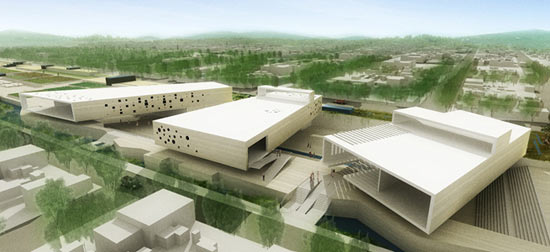
agriculture museum, culiacan by a10 studio
mexican a10 studio collaborated with carlos marín from lab07 as also hugo sanchez from entorno
to create a proposal for the agriculture museum in culiacan.

agriculture museum, culiacan by a10 studio

one of the most internationally recognized emblems of mexico, and particularly of the state of sinaloa,
is its agricultural production. the state of sinaloa is known as the 'granary of mexico' because it is
the producer of a big variety of food. its efficient fields have become national leaders in their yields.
because the economy of sinaloa is sustained by its agricultural activities, the project seeks to recognize it and promote it, through a project that displays objects related to branches of technology, history of agriculture and agronomy as well as agricultural ways which sustain the economy of sinaloa.
through the creation of the museum of agriculture the city government tries to allow the public
to learn more about the forms of production in the locality, while recognizing both the agricultural
practice as such, and those who make possible such a noble activity.
is its agricultural production. the state of sinaloa is known as the 'granary of mexico' because it is
the producer of a big variety of food. its efficient fields have become national leaders in their yields.
because the economy of sinaloa is sustained by its agricultural activities, the project seeks to recognize it and promote it, through a project that displays objects related to branches of technology, history of agriculture and agronomy as well as agricultural ways which sustain the economy of sinaloa.
through the creation of the museum of agriculture the city government tries to allow the public
to learn more about the forms of production in the locality, while recognizing both the agricultural
practice as such, and those who make possible such a noble activity.
in a10 studio's proposal the outside is as important as the inside. there are no objects
and an external reality, but a continuum between forms that wrap and un-wrap, that close and open,that focus and serve as a focus. the architecture as this, expanded in reality, in the middle, through the environment, is an extension. the environment in which it appears is a field.
and an external reality, but a continuum between forms that wrap and un-wrap, that close and open,that focus and serve as a focus. the architecture as this, expanded in reality, in the middle, through the environment, is an extension. the environment in which it appears is a field.
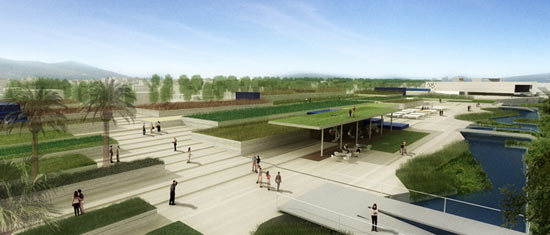
based on the topographic analysis of the site, they suggest a strategy of folding, cutting
and movement of the territory.such movements define platforms developed as programmatic
scenarios, functional plateaus exacerbating their flexible surface condition, either as slipped
and extended surfaces [dynamic soil], or as extruded surfaces (located reliefs). in both cases
it is manipulated landscapes that refer to the nature of vacant spaces, and ultimately, the very
definition of landscape as a background, as construction and stage at the same time: landscapes
within landscapes.
and movement of the territory.such movements define platforms developed as programmatic
scenarios, functional plateaus exacerbating their flexible surface condition, either as slipped
and extended surfaces [dynamic soil], or as extruded surfaces (located reliefs). in both cases
it is manipulated landscapes that refer to the nature of vacant spaces, and ultimately, the very
definition of landscape as a background, as construction and stage at the same time: landscapes
within landscapes.

the architects propose:
- an ecology where sustainability means interaction.
- where nature is is also artificiality.
- where the landscape is topography.
- where energy is information and technology the vehicle to development.
- where development is recycling and evolution is genetic.
- where environment is the field.
where retain involve always intervene.
- an ecology where sustainability means interaction.
- where nature is is also artificiality.
- where the landscape is topography.
- where energy is information and technology the vehicle to development.
- where development is recycling and evolution is genetic.
- where environment is the field.
where retain involve always intervene.

the exterior at night
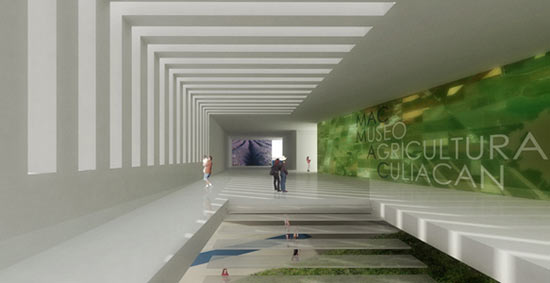
interior of the museum
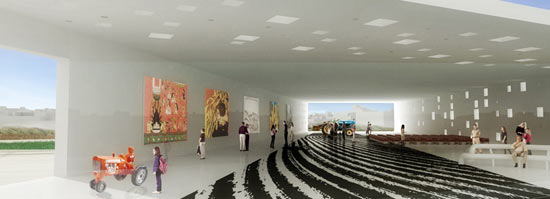






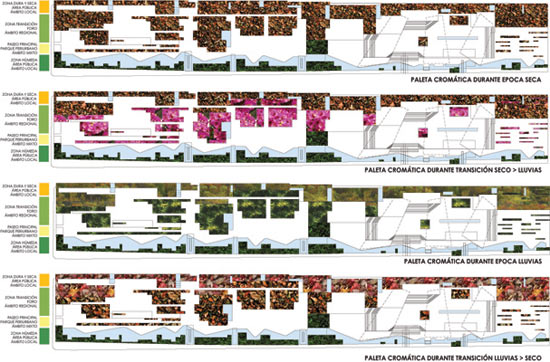
the selection of vegetal species to exhibit took into account the degree of maintenance as well as
the main agricultural products of the state of sinaloa and the natural species of native vegetation. in this way we have that public space becomes in a same gesture in museum-park-public space. presenting the exhibiting object in real time with their processes and characteristics of agricultural activity, where the user can directly see how these are conducted and its temporality. species selection also took into consideration the color palette that these species may have throughout the year generating a 'living park' an ever-changing exhibition and intervention which always seem dynamic and not static representationof the agricultural processes.
the main agricultural products of the state of sinaloa and the natural species of native vegetation. in this way we have that public space becomes in a same gesture in museum-park-public space. presenting the exhibiting object in real time with their processes and characteristics of agricultural activity, where the user can directly see how these are conducted and its temporality. species selection also took into consideration the color palette that these species may have throughout the year generating a 'living park' an ever-changing exhibition and intervention which always seem dynamic and not static representationof the agricultural processes.




air circulation

air circulation

air circulation

circulation flow of museum


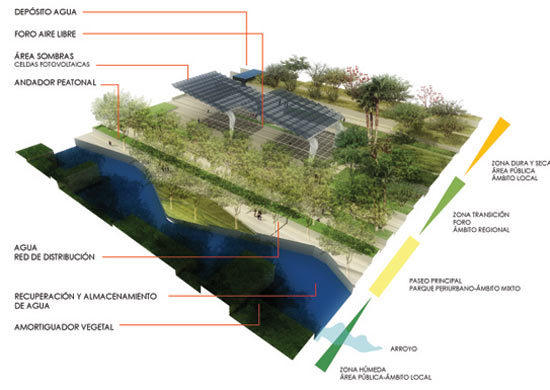
areas of the agriculture museum, culiacan

areas of the agriculture museum, culiacan

areas of the agriculture museum, culiacan
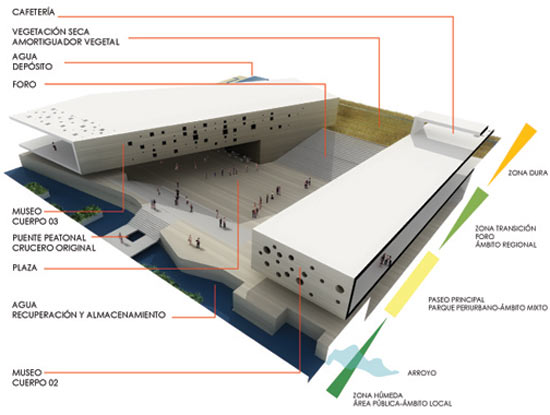
areas of the agriculture museum, culiacan








